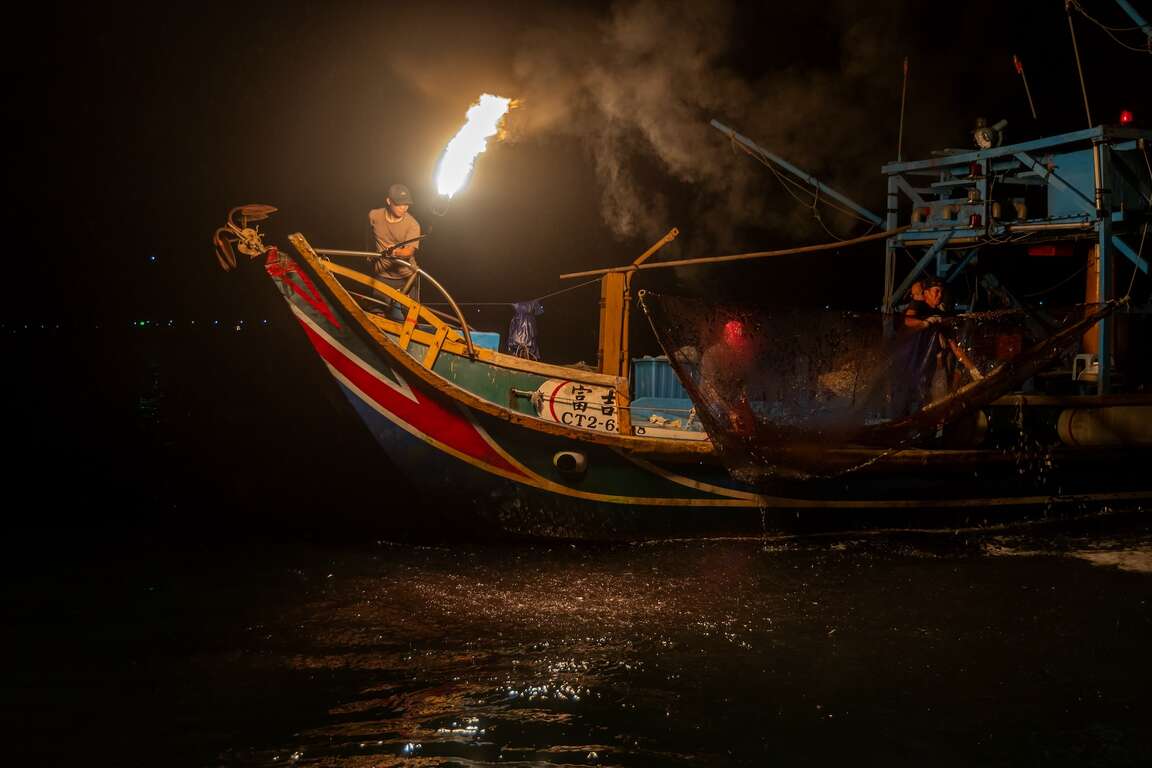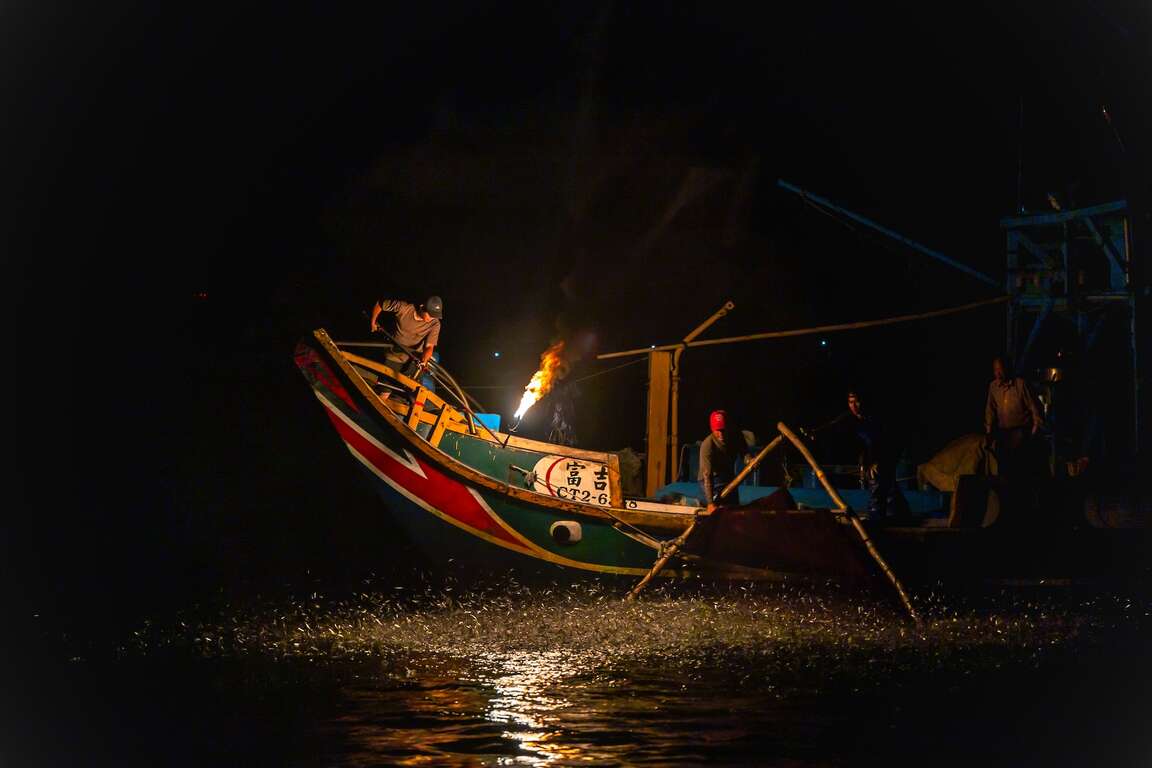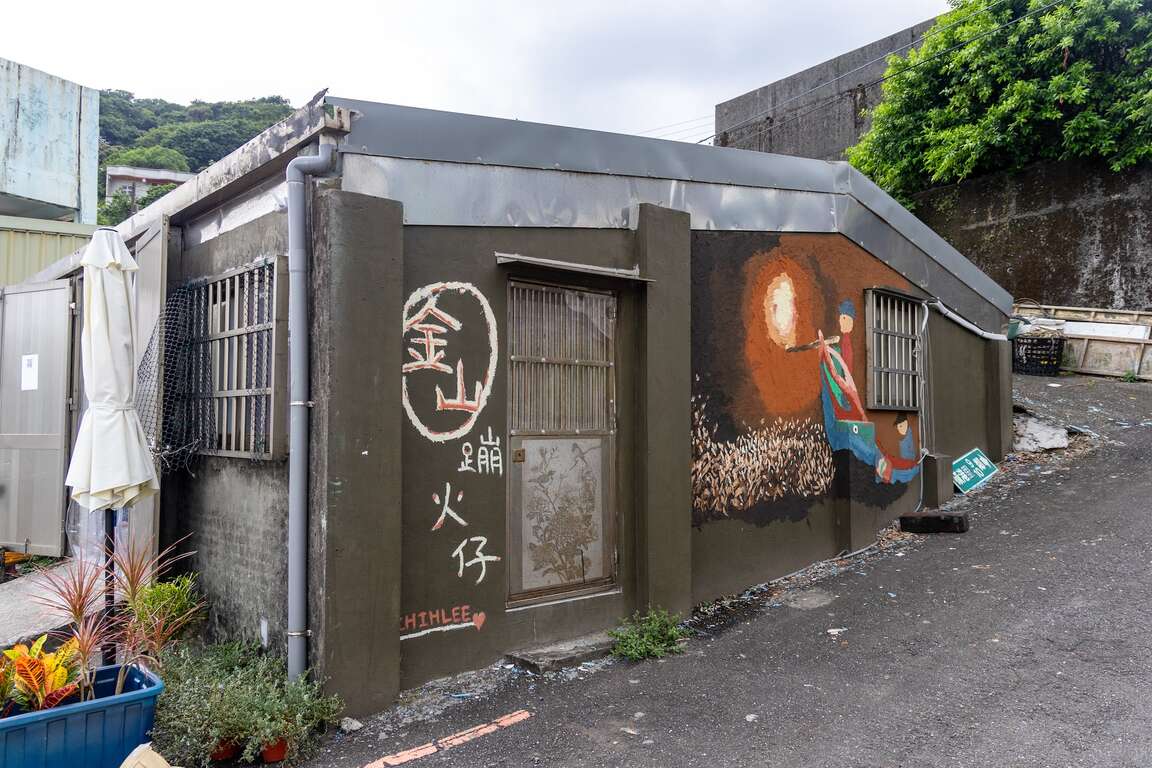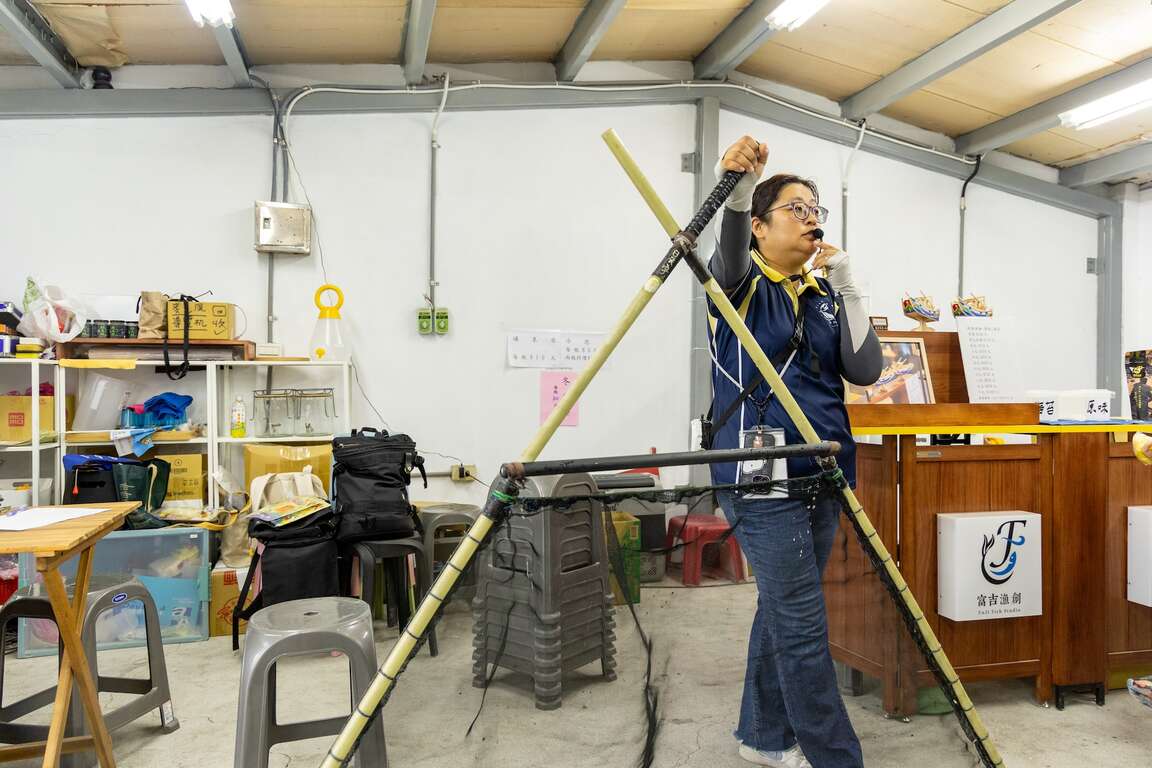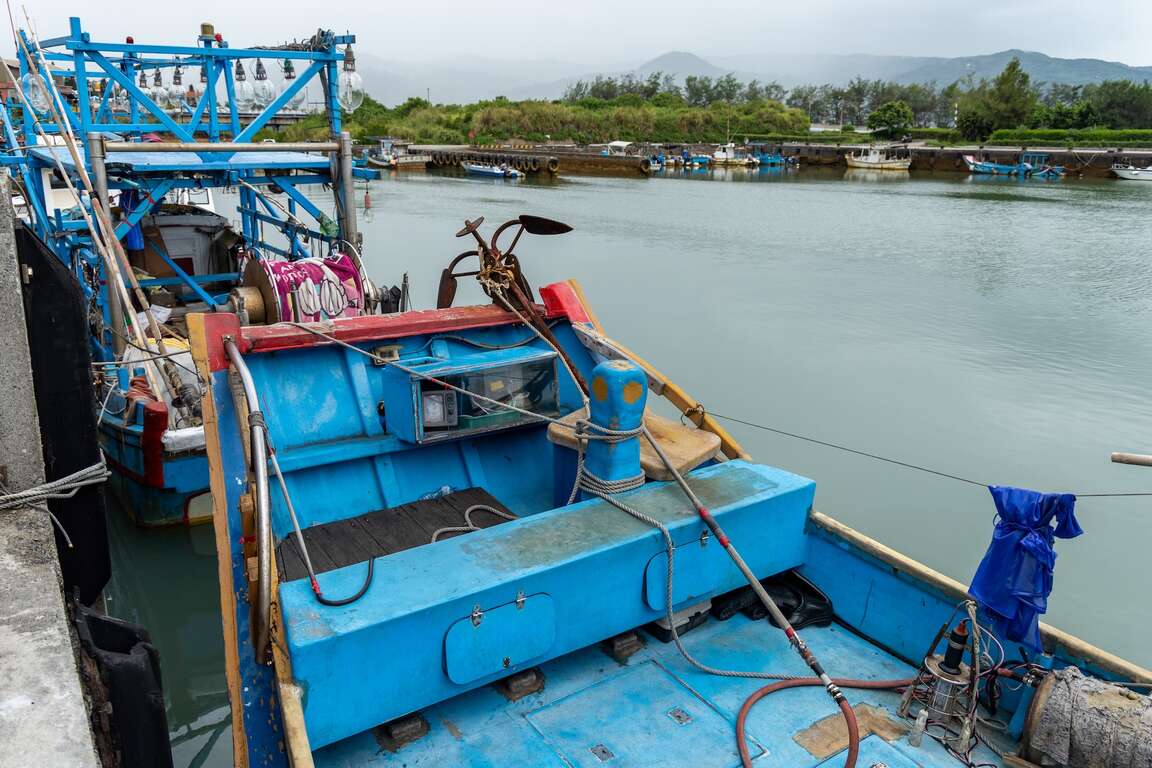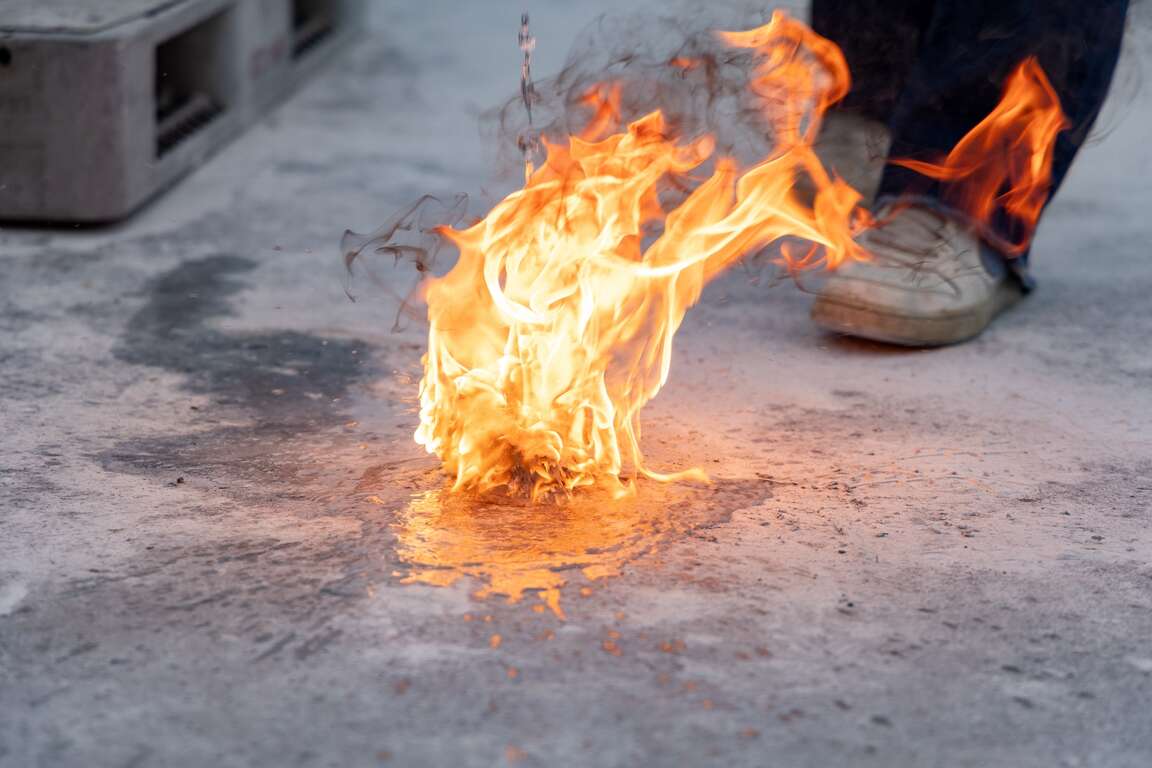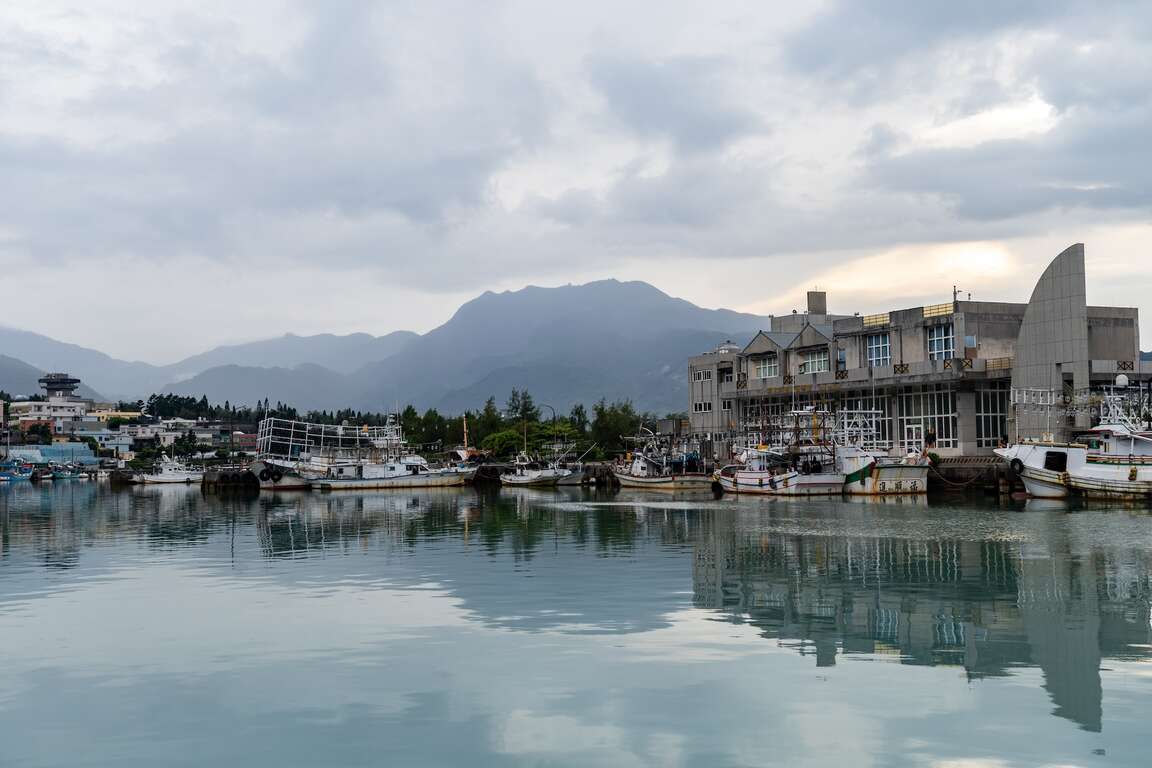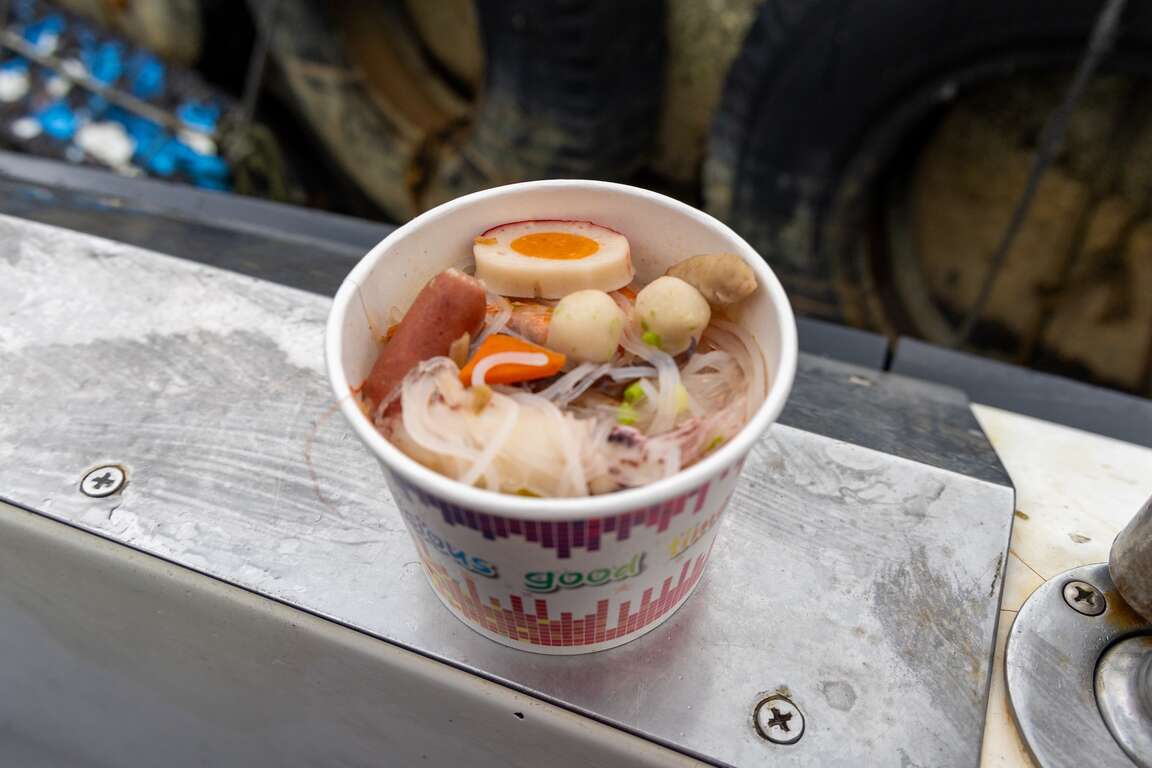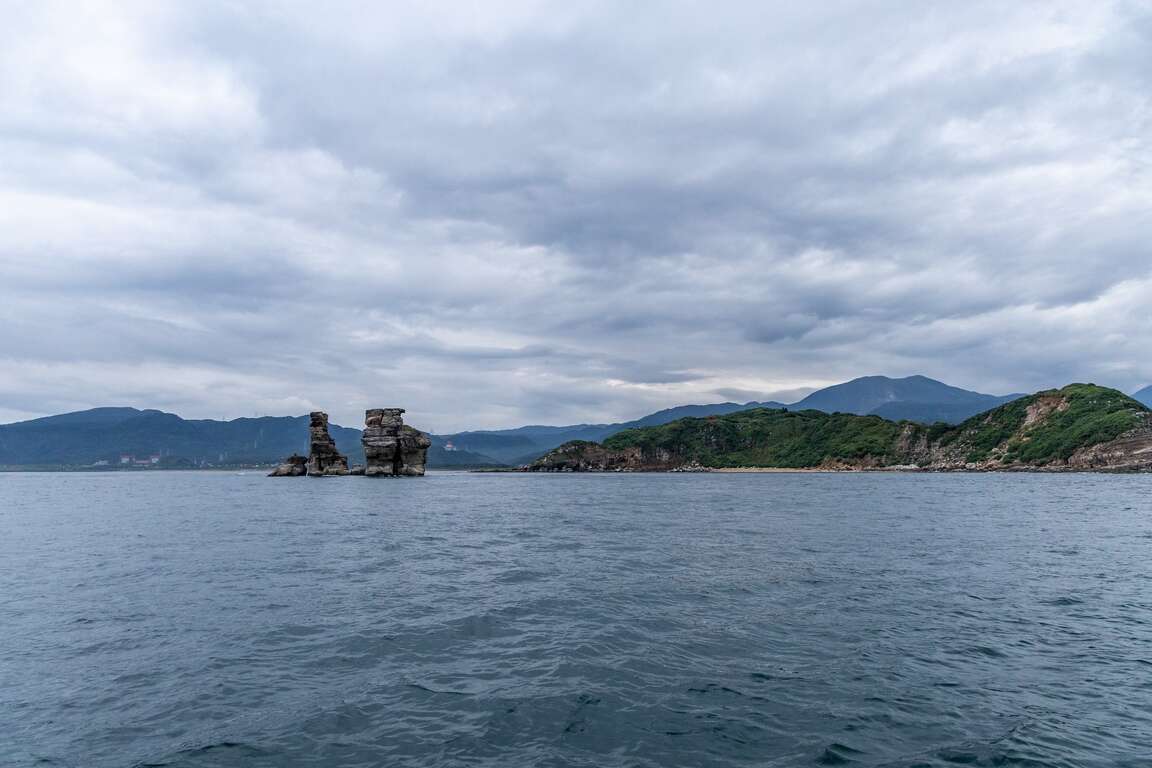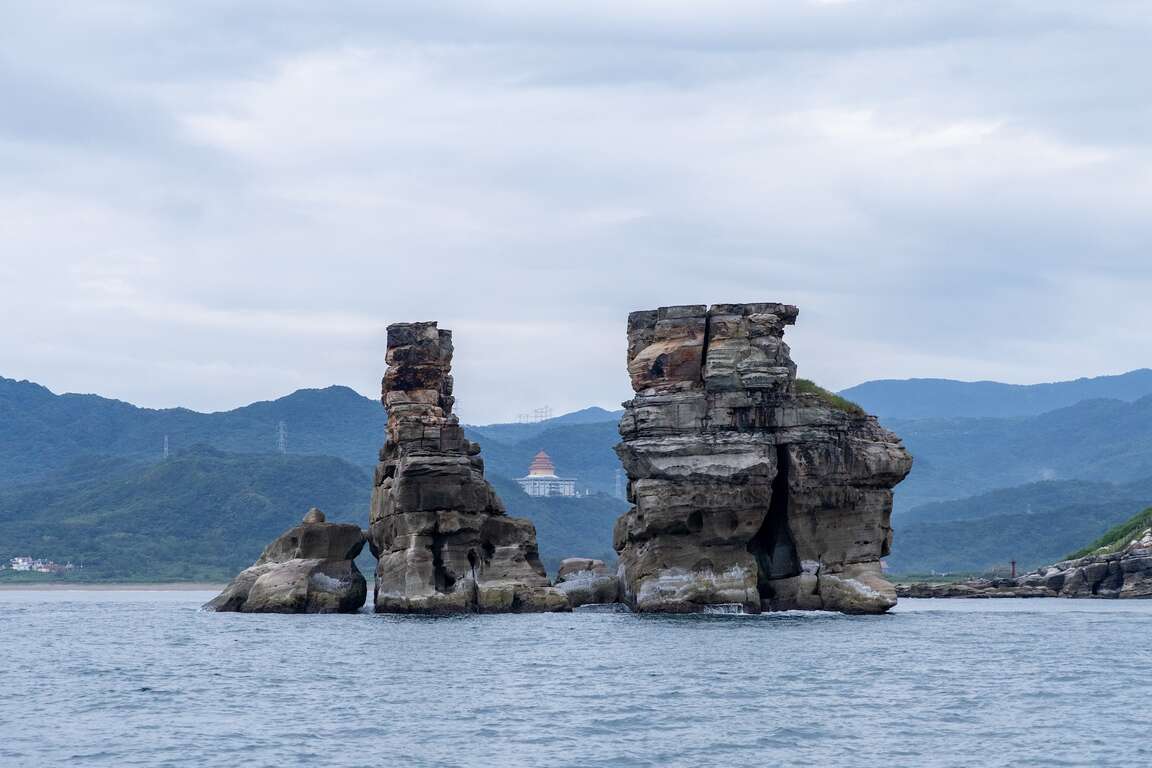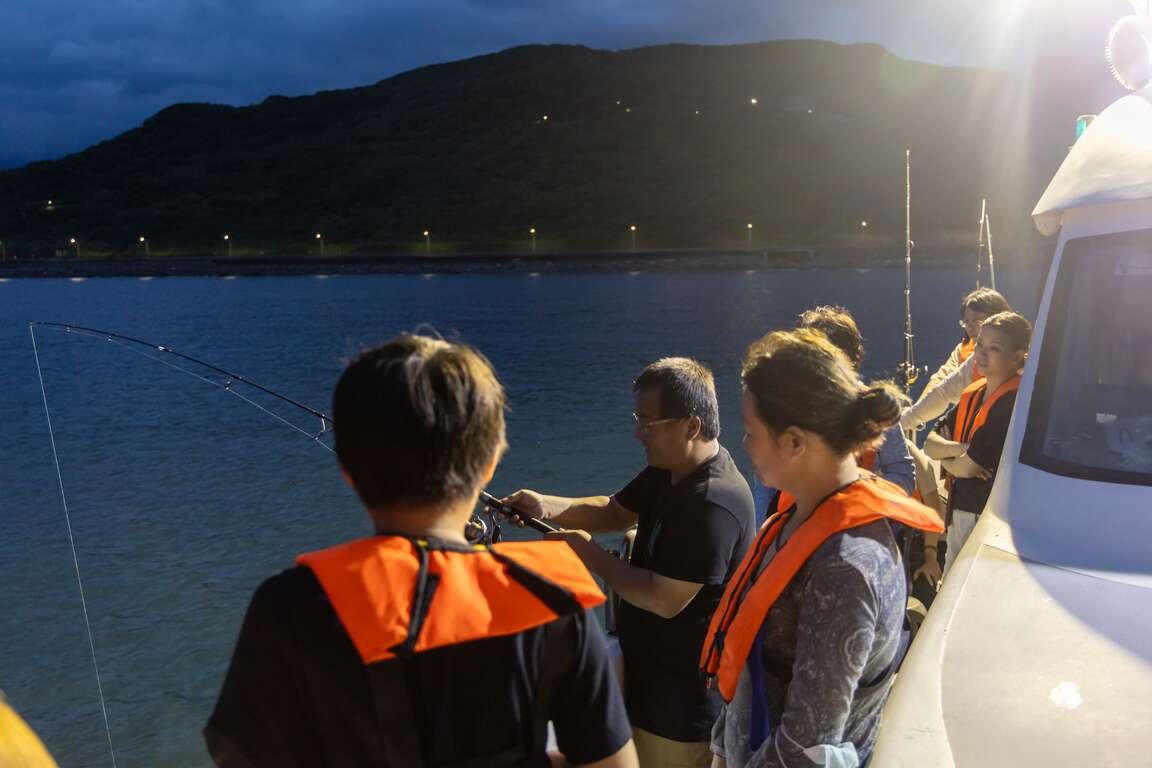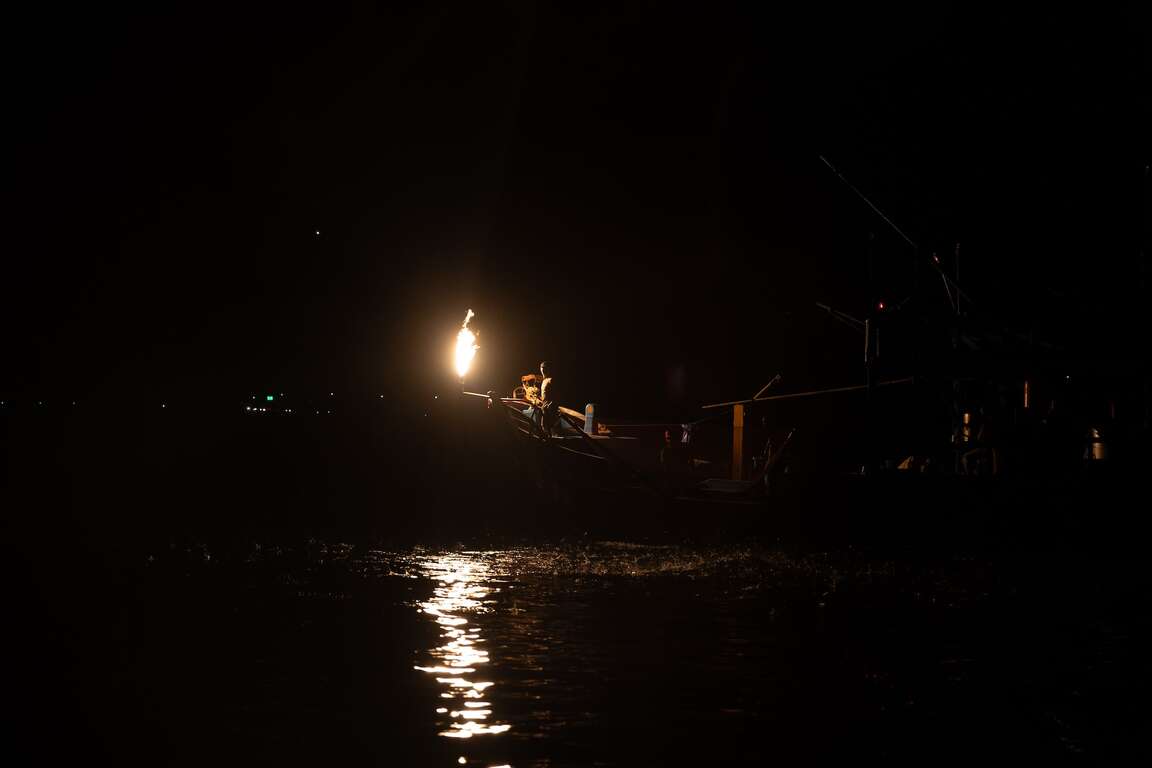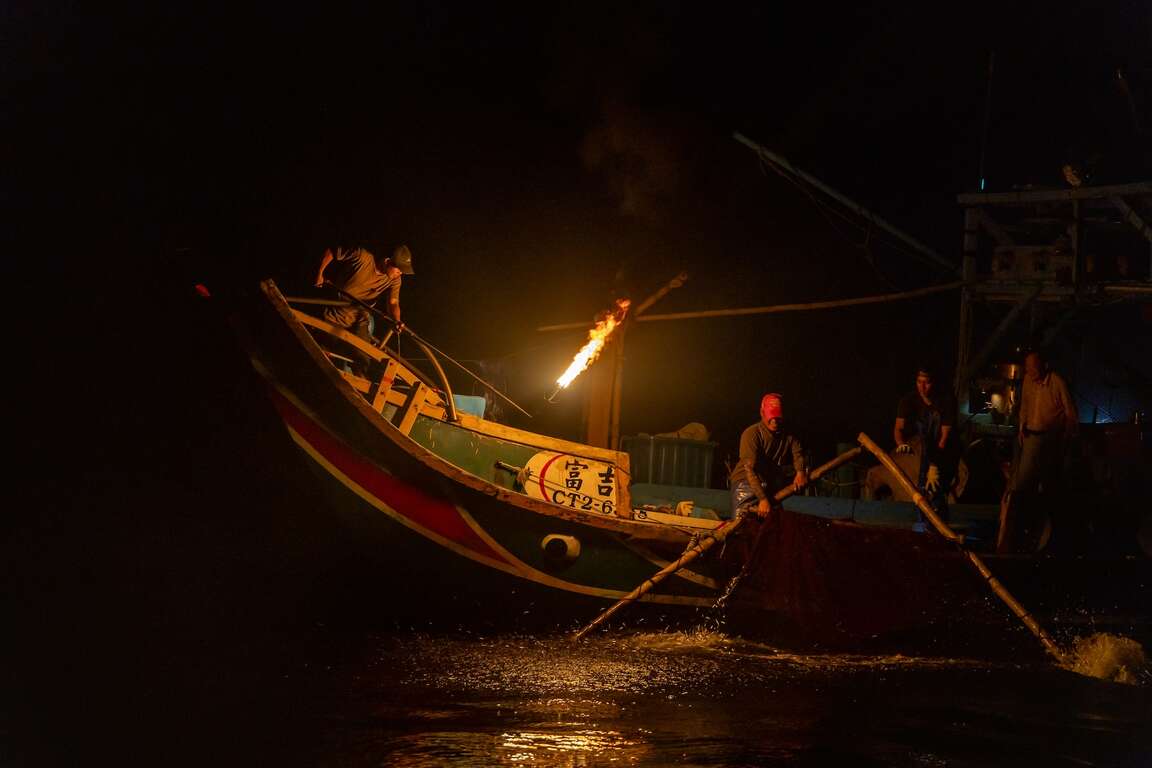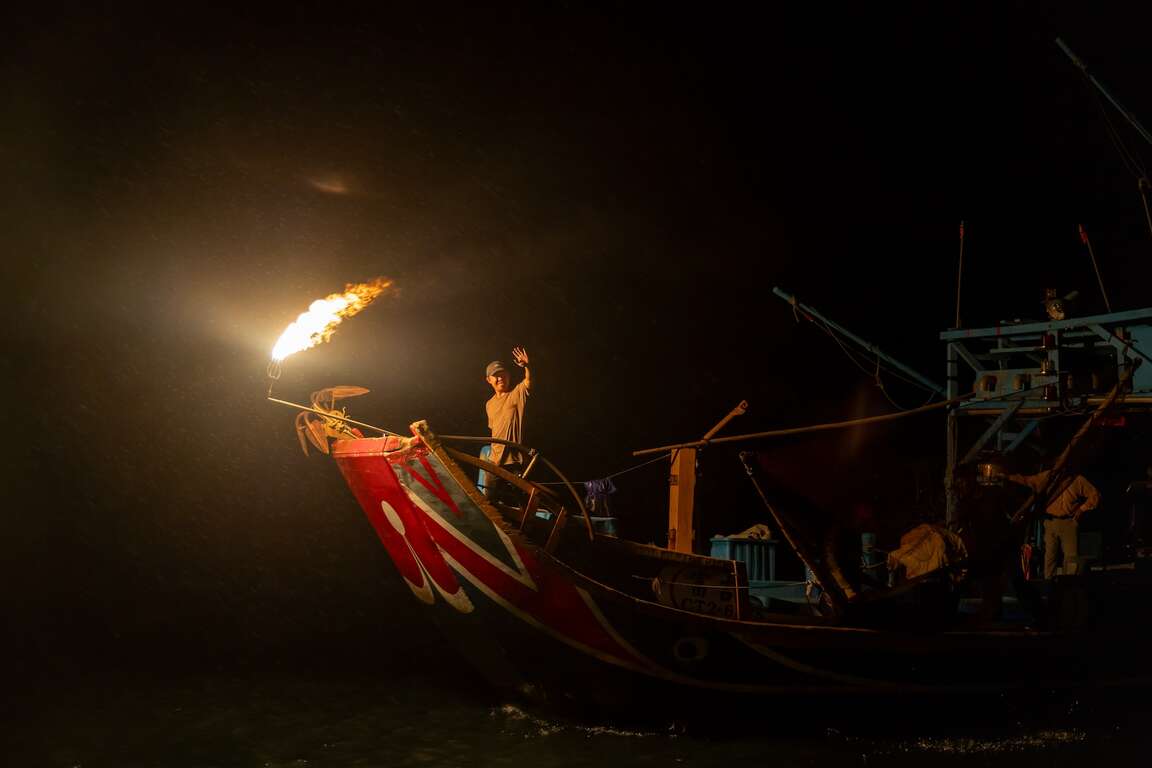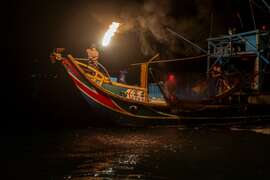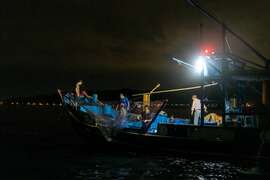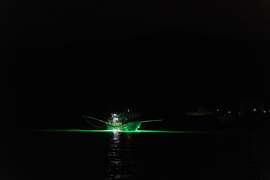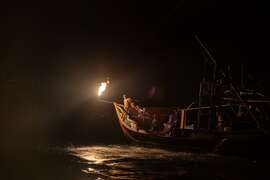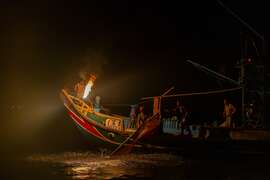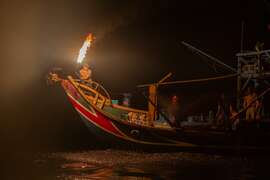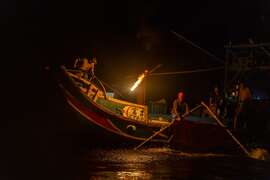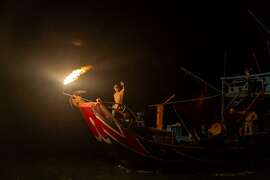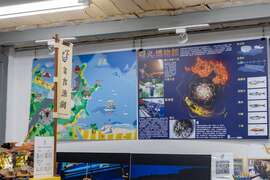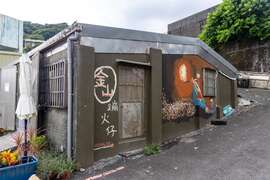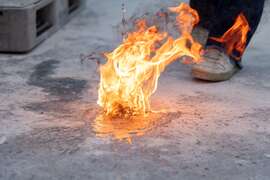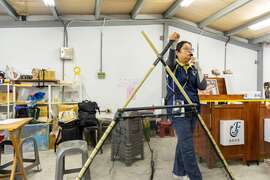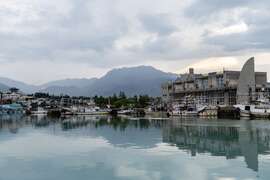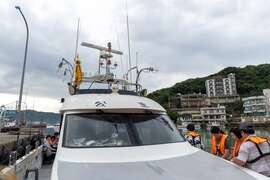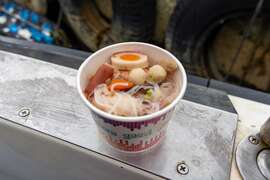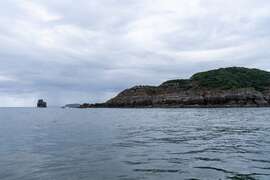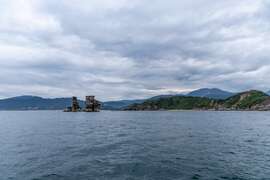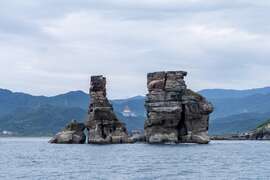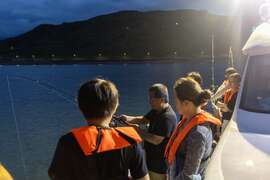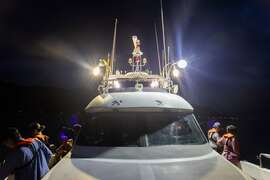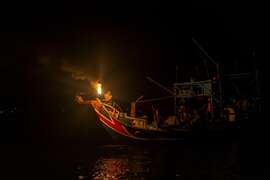The Fluorescent at Night on the Northern Coast - Jinshan Sulfuric Fire Fishing
At night, near the coast of Jinshan District, the only on the dark sea surface is the 4000-watt white fish-attracting lights of a neritic squid-catching boat in the distance, the sound of waves, and the sporadic traffic on Provincial Highway 2. Suddenly, a "boom!" sounded, and the flashing torches illuminated the silent sea surface, and the phototaxis small fishes jumped out of the sea one after another. This unique scenery limited to summer comes from the traditional fishing method unique to Jinshan Huanggang Fishing Harbor - "Jinshan sulfuric fire fishing," the most dazzling conventional fishing method in Taiwan.
The sulfuric fire fishing boat is also commonly known locally as the "Hia-A-Tsun." Fishing boats set sail at night, and the captain stands at the ship's bow with a torch to attract phototactic fish species, such as pilchard, to jump out of the water, then catches them with a skimming net. It has been a traditional fishing method in Jinshan for a hundred years and was registered as a cultural asset of New Taipei City in 2015. During its heyday, more than 40 sulfur fire fishing boats were operating in the waters off the northern coast. However, in 2016, the T.S. Lines cargo ship ran aground in Shimen, causing an ecological disaster on the north coast due to the oil spill. The June 2017 flood caused seawater desalination in Jinshan, severely damaging the area's marine ecology for the second time and causing schools of pilchard to leave Jinshan. At one point, only one remaining ship, the Fuji 268, was still in operation.
Fortunately, after several years of persistence, some mud carp have returned to the Jinshan coast in the past two years. Also, fishers have transformed the sulfuric fire fishing boat into a tourist experience activity. During the Sulfuric Fire Fishing season, which lasts from May to September every year, they combine fishing village tours with sea fishing to preserve the beauty of traditional fishing methods.
The sulfuric fire fishing boat uses a flat-bottomed and flat-headed boat. It has a low speed but has the characteristics of fast turning and high maneuverability. 4-8 people operate the sulfuric fire fishing boat, including the captain and the fire crews. They use a fish finder on the bow to search for fish. The fire crews then use searchlights to identify the fish species. After ation, they use a torch to attract the light, attracting pilchard, Japanese anchovy, and other fish to jump out of the water. Also called Tainan sardine, pilchard is used as fish bait or grouper feed after processing. When the fishing conditions are good, a sulfuric fire fishing boat can catch more than 800 baskets of pilchard.
The earliest sulfuric fire fishing boat used bamboo torches. After introducing calcium carbide during Japan's rule, fishers changed the ignition system to calcium carbide. Fishers poured water into the calcium carbide barrel to produce acetylene gas and through the filter cylinder to ignite the torch. The ignition produced a "boom" sound, which is the origin of the name of the sulfuric fire fishing boat today.
Take a yacht out of Huanggang Fishing Port and enjoy one of Jinshan's eight scenic spots, "Bamboo Peak Mist," while tasting rice noodles with neritic squid. From the sea, enjoy the beautiful coastline of Jinshan and watch the dazzling Jinshan sulfuric fire fishing boat up close after nightfall.
The yacht sails out of Huanggang Fishing Port, and what comes into view is the Jinshan Cape deep into the sea and the most famous landmark of Jinshan - the Twin Candlestick Islets. Besides, overlook the Yehliu Scenic Area and enjoy the scenery of the Jinshan coastline. While waiting for the sulfuric fire fishing boat, pick up a fishing rod and experience sea fishing fun.
In the waters between Tiaoshi Coast and Yehliu, the sulfuric fire fishing boat used fish finders and searchlights for schools of pilchard at night. The yacht began to turn off the lights. After turning off the lights so as not to affect the sulfuric fire fishing boat's search for schools of fish, the yachts followed the Fuji 268 sulfuric fire fishing boat, everyone in the yacht holding their breath and waiting for the moment when the school of fish jumped out of the water. "Bang!" the gorgeous torches ignited on the sea, illuminating the dark sea of Jinshan. This unique view of the world is undoubtedly a beautiful visual feast.
"Yes, here comes fish!" Stimulated by the flames, the school of pilchard jumped out of the water, flashing like fireflies on the sea. The crew members skillfully caught the pilchard with the skimming net, and the passengers on the yacht celebrated with thunderous applause.
The fire crew waved his hand handsomely to greet the crowd. The flashing torch in his hand is not only a tool for fishing but also carries a sense of mission to continue the tradition and pass on the unique traditional fishing method of Jinshan.
